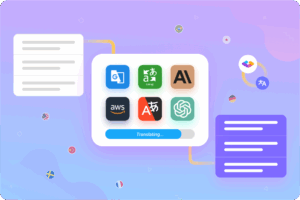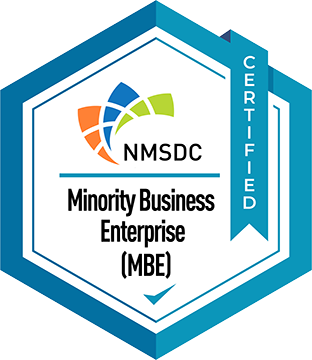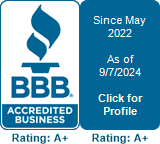In the first parts of this blog series, we’ve discussed types of school meetings and what to anticipate. Now, let’s talk about IEP meetings. Meetings to develop an IEP are some of the most common school interpreting meetings you’ll encounter as an interpreter. They’re collaborative processes between school administration, parents, and students, to determine how much support the student needs. So what is an IEP? What should you expect as you help a family and also school system through the process?

What is an IEP?
IEP stands for “Individualized Education Program”. It’s also known as an Individualized Education plan. The Individualized Education Plan is the written document required by law. The document lays out the ways in which the student needs support and the resources the school will provide.
You can think of it as a “map,” to help create a plan to help a student thrive. Some students need special education accommodations. Special education can be full-time, itinerant, or supplemental.
Itinerant special education is occasional, when the support teacher is at the school and can meet with the student. “Supplemental support” is provided by the regular teacher in the general classroom without removing the student for specialized services. Both the plan and the document are covered under the Individuals with Disabilities Education Act– the special education law, known as IDEA.
All public schools offer IEPS, and most private schools have programs that work along the same lines. Young children (under three years old) generally work with early intervention programs. These programs are supported by the state or private agencies, depending on the child’s needs. When working with a family as an interpreter, you’ll likely be called to help facilitate every step of the process.
Interpreting through an IEP Process
Interpreting through an IEP process happens in seven steps. Be prepared to help set up meetings over the phone as well as attending them.
-
Pre-Referral
The pre-referral evaluates whether a student’s challenges can be resolved in the classroom without extra support. There are many ways a pre-referral can be initiated and performed. It depends on the developmental needs and disabilities the student exhibits. The main goals of the pre-referral are to:
- Document and elaborate the challenges and difficulties exhibited by the student.
- Evaluate the usefulness of classroom accommodations and changes.
- Review the power of different instructional interventions.
- Supervise the development of the student.
-
Referral
If the school determines that the student needs support outside of the general classroom setting; they’re referred for special education. The referral can come from parents, teachers, daycare professionals, nurses, doctors, or social service agents. Often, poor academic performance, hyperactivity, and also consistent classroom disruption or misbehavior are prerequisites to the referral.
-
Identification/Evaluation
Once the district processes the referral, they carry out a variety of assessments. These determine if the student has a disability that requires special education services. Determining the student’s level of interpersonal relationships and performance at school. Also, home play important roles in the evaluation process. Parents, teachers, school psychologists, and educational diagnosticians contribute to this step, depending on the state guidelines and requirements. The evaluation process goal is to determine a baseline performance level, also known as a “present level of performance.”
-
Eligibility
Using the information gathered during the evaluation stage, the school makes a report. They determine whether the student is eligible or ineligible for special education and/or support services. Students who don’t meet the qualifications for special education support remain in the general classroom.
-
Development
The next step is to create the actual IEP. The IEP team includes parents, educators, administrators, and sometimes other specialists. Parents are allowed to bring child advocates and also any other support staff they need – this includes interpreters! The school is required to provide an interpreter upon request. During the IEP development meeting, the student’s evaluation informs professionals about what resources they’ll need for success. The IEP is written (it’s usually 10-12 pages) and everyone agrees upon the student’s short; and also long-term goals. The school also generally creates a NOREP (Notice of Recommended Educational Placement). It does not have to be signed at the meeting. A parent has up to ten days to sign and return the sheet or dispute its findings.
-
Implementation
After the team develops the IEP, they implement the program. The agreed-upon services begin. These services can include learning support, behavioral intervention plans, assistive technology, speech/language pathology, occupational/physical therapy, and also behavioral therapy, among others.
-
Evaluation and Review
IEPs require diligent follow up. Review meetings are typically held once per year. However, any time a parent requests an IEP review, the school is legally obligated to hold one. The purpose of a review is to be sure that the student is meeting their stated annual goals. If the student isn’t meeting their goals, the school must revise the IEP. If they are meeting their goals, the eventual plan is to transition the student back to the general classroom environment. While the IEP is in progress, the student should always be in the “least restrictive environment.” This means that the student’s experience should be as close as possible to the general classroom experience.
-
Resolving disputes
This isn’t always a step but it sometimes applies. If a parent or teacher is unhappy with the way the school is implementing the IEP, they call a meeting. Due process is triggered to resolve the dispute. Often, mediation and re-evaluation are sufficient to come up with a new or revised plan without legal intervention.
Interpreting in a School Setting: Global Arena’s eLearning Course
Interested in learning more about IEP meetings and how to prepare for them as an interpreter? Explore our eLearning course, Interpreting in a School setting. The course includes a certificate of training upon successful completion and lifetime access to updates and new information. You’ll also receive our school terminology glossary, complete with spaces to add terms in your target language.







